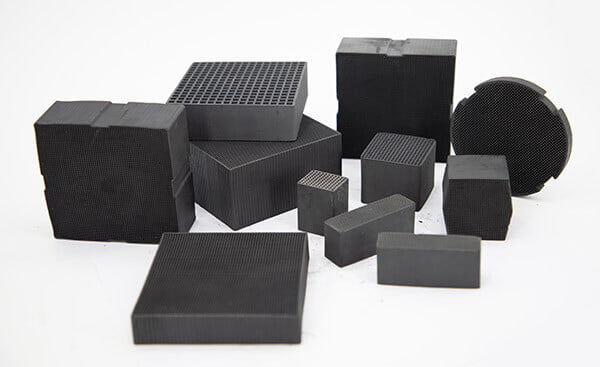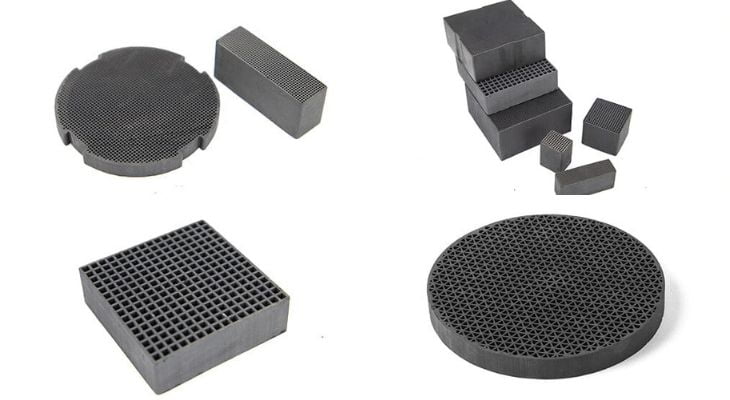
In today’s era of pursuing environmental protection and efficient resource utilization, activated carbon honeycomb is favored by various industries due to its unique adsorption properties.
Typically used as an optimal choice for filters, honeycomb carbon can effectively eliminate odors, particulate matter, and pollutants.
This article will delve into the concept of honeycomb activated carbon, its unique advantages, extensive application areas, and the classification of different types based on shapes.
If you happen to be interested, please continue reading.
What is Honeycomb Activated Carbon?
Honeycomb activated carbon, as a special form of activated carbon, is known for its regular pore structure. It appears as a black honeycomb shape.
Honeycomb activated carbon is made from high-quality coal-based activated carbon (or coconut shell activated carbon powder) as raw material, molded through honeycomb pressing, and activated at high temperatures.
Types of Activated Carbon Honeycomb

Honeycomb activated carbon can be classified into the following main types based on the final product’s shape:
Different shapes of honeycomb carbon apply to different scenarios, and the choice of type depends on specific adsorption requirements and process demands.
Manufacturing Process
Applications of Honeycomb Activated Carbon
Honeycomb carbon has widespread applications in various fields, including chemical engineering, light industry, pharmaceuticals, environmental protection, food, and military.
It can be used as a catalyst or catalyst carrier, as well as for gas separation and purification, organic solvent recovery, gas or flue gas desulfurization, wastewater treatment, drinking water purification, decolorization, deodorization, and purification and refining.
It is suitable for treating organic waste gases (such as triphenyl and toxic gases) in factories with high airflow and low concentrations. Additionally, it is applicable for indoor air purification and restaurant oil fume treatment, as well as odor removal in appliances like air conditioners, and refrigerators.

Advantages of Activated Carbon Honeycomb
Honeycomb activated carbon has a well-developed internal pore structure, matching the size of harmful gas molecules. It can effectively adsorb and lock formaldehyde, benzene, and other VOCs.
Conclusion
In general, honeycomb carbon plays an irreplaceable role in air treatment, water purification, and promoting industrial sustainable development.
After reading this article, you must have a comprehensive understanding of honeycomb carbon. If you have any questions or would like to delve further, feel free to contact us at any time.
Do you plan to purchase activated carbon?